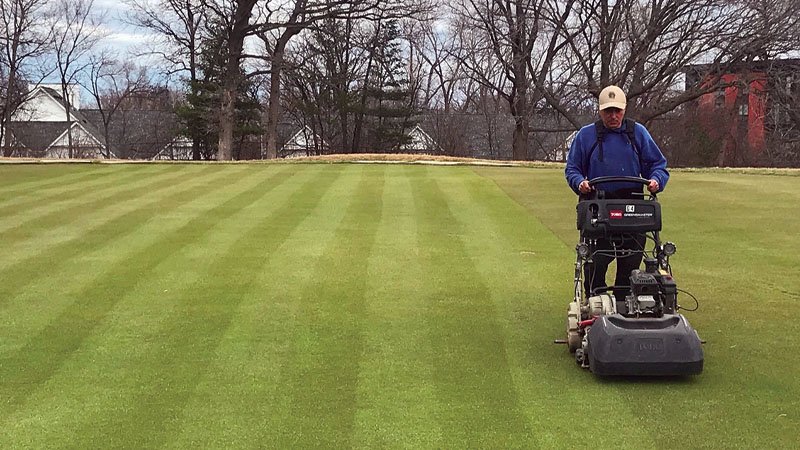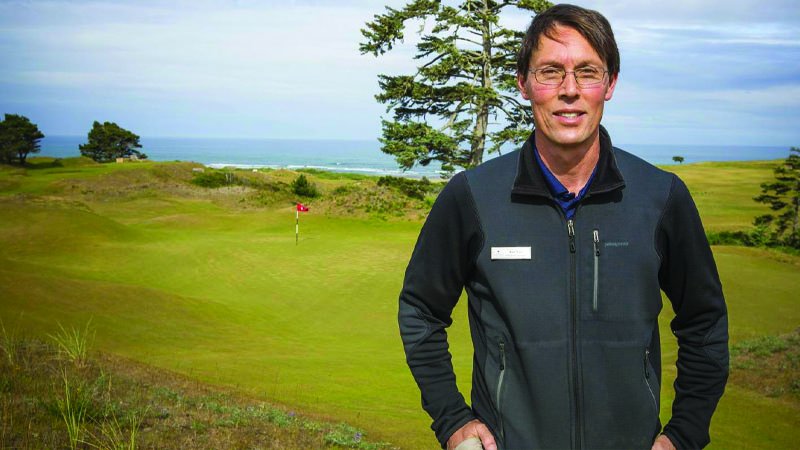
The picture has not been a pretty one for golf during the better part of the last two decades. Shifting demographics, cultural and generational differences have resulted in a steady decline in popularity during the past 15 years, resulting in a net loss of about 8 million players.
When the economy goes in the dumper, golf usually is not far behind. In fact, it often precedes it. So, when the country - and the world for that matter - went on lockdown in March, many likely thought the virus signaled a death knell for golf. In some respects, that assumption was correct, as several courses already experiencing financial hardship closed.
When Golf Datatech released its monthly rounds-played report for April, the story it told was predictable considering many courses were shuttered and people were advised to stay home save for activities like going to work or the grocery store. Rounds played for the month were down 42 percent compared to April 2019.
Jim Koppenhaver, principal of Pellucid Corp., wrote in April that the losses for the month "likely represent the 'as bad as it gets' scenario based on more states/courses opening starting 5/1 as well as restrictions on operations being relaxed."
Although Koppenhaver predicted better times ahead in May, it is doubtful even he could have foreseen what was to come.
Rounds played were up - a lot - everywhere. It seemed - and this is an obvious and intentional oversimplification - like a lot of those 8 million people lost since 2006 came back. Although Golf Datatech's report for May is not due for another couple of weeks, it is pretty obvious that numbers are going to be way, way up.
Courses that had laid off workers in March were caught off guard when golfers flooded back to the course.
We saw a lot of people who haven't played in a while, or who had never given it a shot until now. Hopefully, golf takes something that was negative and turns it into a positive.
Bayou Oaks at City Park, a city-owned 36-hole facility in New Orleans, was completely rebuilt after being wrecked 15 years ago by Hurricane Katrina. With a new Rees Jones-designed golf course that opened in 2017, the property relies heavily on outings and tournaments for revenue, much of which it contributes to the Bayou District Foundation that is dedicated to helping the community in New Orleans' Gentilly neighborhood. With many activities canceled due to the virus, it would not have been a stretch in March to paint a bleak picture for Bayou Oaks as well as the foundation it serves.
That painting better have been in watercolor.
The course never closed, throughout the virus and play has been steady, in fact, in May it was downright crazy.
More than 9,000 rounds were played just in May over Bayou Oaks' 36 holes.
"With everything closed, I think people thought 'Why not go outside and play golf?' It was the safest thing you could do" said Bayou Oaks superintendent Ryan McCavitt. "We saw a lot of people who haven't played in a while, or who had never given it a shot until now. Hopefully, golf takes something that was negative and turns it into a positive."

Jeff Johnson, superintendent at Minikahda Club in Minneapolis recalls the angst and uncertainty when golf - and so much more - closed in March in Minnesota.
"No one knew how long it was going to go on or what all of this meant," Johnson said. "My thought was to just get the golf course ready to open, whenever that was. The quarantine didn't hurt us too much, it was still too cold. The week after Easter (April 12), it was still in the 20s."
Johnson was able to keep a skeleton crew on board and brought back his team on April 17.
Since then?
"Everybody's been busy around here," Johnson said. "Private and public."
Naturally, expectations were a little different among the members at Minikahda, most of whom were just happy to have the chance to play. The course was regressed in 2018, and didn't open for play in 2019 until June 25.
"They didn't get a chance to play the course last spring, and they didn't get to play first thing out of winter this year," Johnson said. "They were just happy to have the chance to play."
Since we didn't have golf, this gave us an opportunity to do some things we normally wouldn't be able to do. We were able to aerify and do some other things that are normally too disruptive to golf.
For the first time since it opened in 1999, Bandon Dunes closed in April due to the virus. With half of his staff still in place, Ken Nice, director of agronomy at the six-course property on Oregon's Pacific coast, took advantage of the downtime for some cultural practices he otherwise would have to squeeze in.
"We have a 12-month season. We never shut down," Nice said. "Since we didn't have golf, this gave us an opportunity to do some things we normally wouldn't be able to do. We were able to aerify and do some other things that are normally too disruptive to golf."
The resort, which is scheduled to host this year's U.S. Amateur in August, reopened May 11 and has been busy ever since.
Nice estimates daily play has increased by about 50 percent since reopening.
"Golf, it seems to me, is doing better than a lot of industries," he said. "It has a lot of selling points: open space, fresh air and it's not congested."


